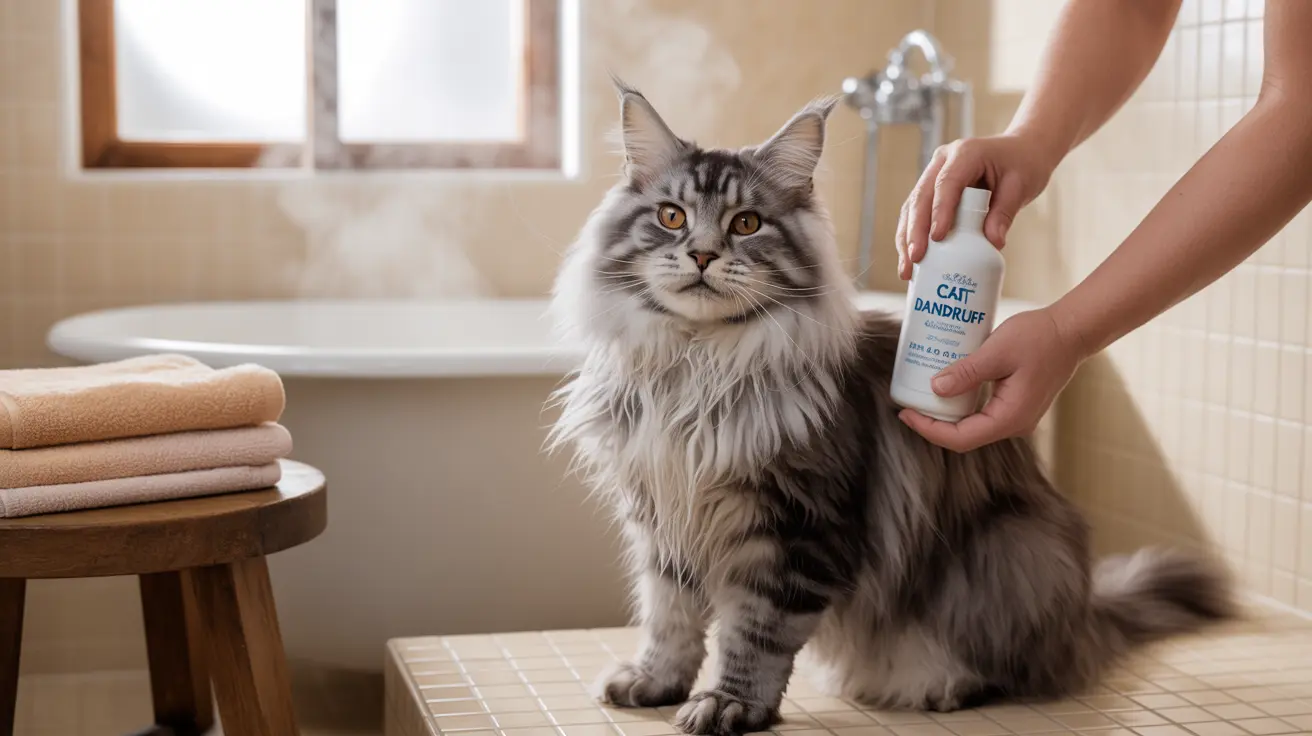Understanding Cat Dandruff and Its Causes
Cat dandruff manifests as visible white flakes of dead skin cells in your cat's fur. Various factors can contribute to this condition, including dry indoor air, nutritional deficiencies, dehydration, or underlying health issues like seborrheic dermatitis. Older or overweight cats are particularly susceptible due to their limited ability to groom effectively.
Essential Ingredients in Effective Cat Dandruff Shampoos
The most effective cat dandruff shampoos contain specific ingredients targeted at addressing both the symptoms and underlying causes of flaky skin:
- Natural moisturizers like coconut oil and aloe vera
- Omega fatty acids for skin health
- Antioxidants and anti-inflammatory compounds
- Gentle, hypoallergenic cleansing agents
How to Choose the Right Cat Dandruff Shampoo
When selecting a cat dandruff shampoo, consider these crucial factors:
For Sensitive Skin
Look for hypoallergenic formulas free from harsh chemicals, artificial fragrances, and common irritants. These gentle formulations help prevent further skin irritation while treating existing dandruff.
For Severe Cases
Choose medicated shampoos containing antifungal or antiseborrheic ingredients, but only under veterinary guidance. These specialized formulas target more serious skin conditions that may be causing persistent dandruff.
Proper Bathing Techniques for Maximum Benefits
To get the most out of your cat dandruff shampoo:
- Use lukewarm water to wet your cat's coat thoroughly
- Apply shampoo gently, working from neck to tail
- Massage the product into the skin for 5-10 minutes
- Rinse completely until water runs clear
- Dry your cat thoroughly with a warm towel
Prevention and Maintenance
Beyond using the right shampoo, preventing cat dandruff requires a holistic approach:
- Regular brushing to distribute natural oils
- Maintaining proper indoor humidity levels
- Ensuring adequate hydration
- Providing a balanced, nutrient-rich diet
- Regular veterinary check-ups
Frequently Asked Questions
What ingredients should I look for in a cat dandruff shampoo to effectively treat dry, flaky skin?
Look for natural moisturizers like coconut oil, aloe vera, and omega fatty acids. Avoid harsh chemicals and artificial fragrances that can irritate sensitive skin.
How often can I safely bathe my cat with dandruff shampoo without causing further skin irritation?
Most cats should be bathed with dandruff shampoo no more than once every 4-6 weeks, unless otherwise directed by a veterinarian. Over-bathing can strip natural oils and worsen the condition.
Are there specific cat dandruff shampoos recommended for sensitive or older cats with dry skin?
Yes, hypoallergenic and gentle formulations specifically designed for sensitive skin are best for older cats. Look for products containing natural moisturizers and avoid those with harsh chemicals.
Can using the wrong shampoo or conditioner worsen my cat's dandruff and skin condition?
Absolutely. Using human shampoos or products not formulated for cats can disrupt the skin's natural pH balance and worsen dandruff. Always use cat-specific products.
When should I consult a vet about my cat's dandruff and what treatments might they suggest?
Consult a vet if dandruff persists despite regular use of appropriate shampoo, or if accompanied by excessive scratching, hair loss, or skin lesions. They may recommend medicated shampoos or investigate underlying health issues.
Remember, while the right cat dandruff shampoo can make a significant difference in managing your pet's skin condition, persistent or severe cases should always be evaluated by a veterinarian to ensure proper treatment and care.






